
Paintings — Maîtres Anciens : Peintures - Dessins - Sculptures, Online

Joos de Momper the Younger was a Flemish landscape painter active in Antwerp between the late 16th century and the early 17th century. Brueghel's influence is clearly evident in many of de Momper's paintings. His work is situated at the transition from late 16th-century Mannerism to the greater realism in landscape painting that developed in the early 17th century. He achieved considerable success during his lifetime.

Joos de Momper the Younger was a Flemish landscape painter active in Antwerp between the late 16th century and the early 17th century. Brueghel's influence is clearly evident in many of de Momper's paintings. His work is situated at the transition from late 16th-century Mannerism to the greater realism in landscape painting that developed in the early 17th century. He achieved considerable success during his lifetime.

Peter Paul Rubens was a distinguished Flemish Baroque painter, renowned for his dynamic, vibrant, and sensuous paintings. Born on June 28, 1577, in Siegen, Westphalia, Germany, Rubens' family moved back to Antwerp in the Spanish Netherlands (now Belgium) after his father's death. He was raised in his mother’s Roman Catholic faith and received a classical education. He began his artistic training in 1591 and later traveled to Italy, where he was profoundly influenced by Renaissance masters like Titian, Tintoretto, and Veronese. This experience significantly shaped his artistic style.
Rubens' art is celebrated for its emphasis on movement, color, and sensuality. He was particularly skilled in depicting religious and mythological scenes, portraits, and landscapes. Some of his notable works include "The Descent from the Cross" and "The Raising of the Cross," which are prime examples of Baroque religious art, showcasing his unique style that blended influences from Italian Renaissance and his own innovations.
Rubens was not just a painter but also a diplomat, serving at various European courts. He was knighted by both Philip IV of Spain and Charles I of England. His diplomatic missions often intertwined with his artistic endeavors, as seen during his travels to Spain and Italy. In addition to painting, he was involved in designing tapestries, prints, and book title-pages. He ran a large workshop in Antwerp, producing works that were popular with nobility and art collectors across Europe. His studio was in his home, the Rubenshuis, now a museum.
His influence extended to his students, notably Anthony van Dyck, and his collaborative works with other artists like Jan Brueghel the Elder. Rubens' work continued to be celebrated for its vitality and influence on the Baroque style, making him one of the most influential artists of his time.
For those interested in the work and life of Peter Paul Rubens, many of his works can be found in museums and galleries worldwide, including the National Gallery in London, which houses several of his paintings like "A View of Het Steen in the Early Morning" and "Minerva protects Pax from Mars ('Peace and War')".
To stay updated on new product sales, auction events, and more related to Peter Paul Rubens, sign up for our updates. We provide essential information tailored for collectors and experts in art and antiques, focusing on the magnificent work of Rubens and his enduring legacy in the world of art.

Tiziano Vecellio, an Italian Renaissance painter from Venice, stands out as a pivotal figure in the art world, renowned for his versatility across various genres like portraits, landscapes, and religious subjects. His influence on the development of Western art, particularly through his revolutionary use of color, is profound and long-lasting.
Born around 1488/90 in Pieve di Cadore, part of the then Republic of Venice, Titian's talent was evident early on. He began his artistic journey in the studio of the Bellini brothers in Venice, later joining forces with Giorgione, another influential painter of the time. This collaboration marked the beginning of a distinguished career that would see Titian become the most sought-after painter in Europe, working for nobility, the Habsburgs, and the papacy.
Titian's style evolved significantly throughout his career. He initially gained recognition for his vibrant, luminous colors and later became famous for his loose brushwork and subtle tonality. This shift was not just a matter of aesthetics but also represented a deeper understanding of color and light. Titian's approach to painting, particularly his use of colore, where he juxtaposed colors to define compositions, contrasted sharply with the line-focused disegno technique of the time. This method contributed significantly to the distinctiveness of Venetian art.
Among his many patrons, Emperor Charles V and his son, Philip II of Spain, were perhaps the most notable. As their official painter, Titian created numerous portraits and mythological works that were celebrated for their psychological depth and expressive use of color. His 'poesie' series for Philip II, including famous works like "Diana and Actaeon," showcased his skill in portraying mythological narratives with a sense of drama and sensuality.
Titian's later works, created in the 1560s and 1570s, are particularly revered for their experimental nature, pushing his art towards what has been termed 'magic impressionism'. These works, like "The Death of Actaeon" and the unfinished "Pietà", demonstrate a radical departure from his earlier style and reflect a continued evolution even in his later years.
For art collectors and experts, Titian's oeuvre represents a crucial link in the history of European art, illustrating the transition from the Renaissance to a more modern, expressive form of painting. His mastery of color and light, combined with his ability to convey deep emotional resonance, continues to influence artists and captivate viewers centuries later.
To stay updated on artworks and auction events related to Tiziano Vecelli, consider signing up for updates. This subscription will ensure you are informed about new product sales and auction events related to this remarkable artist.

Frans Pourbus the Elder was a Flemish Renaissance painter born in 1545 in Bruges, known for his portraiture and religious compositions, as well as a few genre scenes. He inherited a rich artistic legacy as the son of the painter Pieter Pourbus and the father of Frans Pourbus the Younger, an internationally recognized portraitist.
Pourbus’ art is celebrated for its meticulous detail and psychological depth, particularly in his portraits which primarily featured members of the rising middle class, high clergy, local aristocrats, and foreign dignitaries. His acute observational skills and subtle modeling of facial features provided a vivid psychological insight into his sitters, as seen in the Portrait of an Unknown Man.
His religious works were often commissioned by patrons outside Antwerp and included significant projects like the History of Saint Andrew and the Triptych of Viglius Aytta for St Bavo's Cathedral in Ghent. After the Iconoclastic Fury in 1566, he received a prestigious commission to redecorate the choir of the St. Martin's Abbey church in Tournai.
Pourbus’ works are held in high esteem and can be found in several museums and galleries, such as the National Galleries of Scotland and The National Gallery in London, where his pieces continue to draw the admiration of art collectors and experts in the field.
For enthusiasts and experts in Renaissance art and those interested in the intricate craft of portrait painting, Frans Pourbus the Elder’s work stands as a significant reference point for the cultural and artistic achievements of the period. To remain updated on sales and auction events related to Frans Pourbus the Elder, art collectors and antiques experts are encouraged to sign up for updates. This will ensure that you are always informed about new opportunities to acquire works by or related to this master artist.
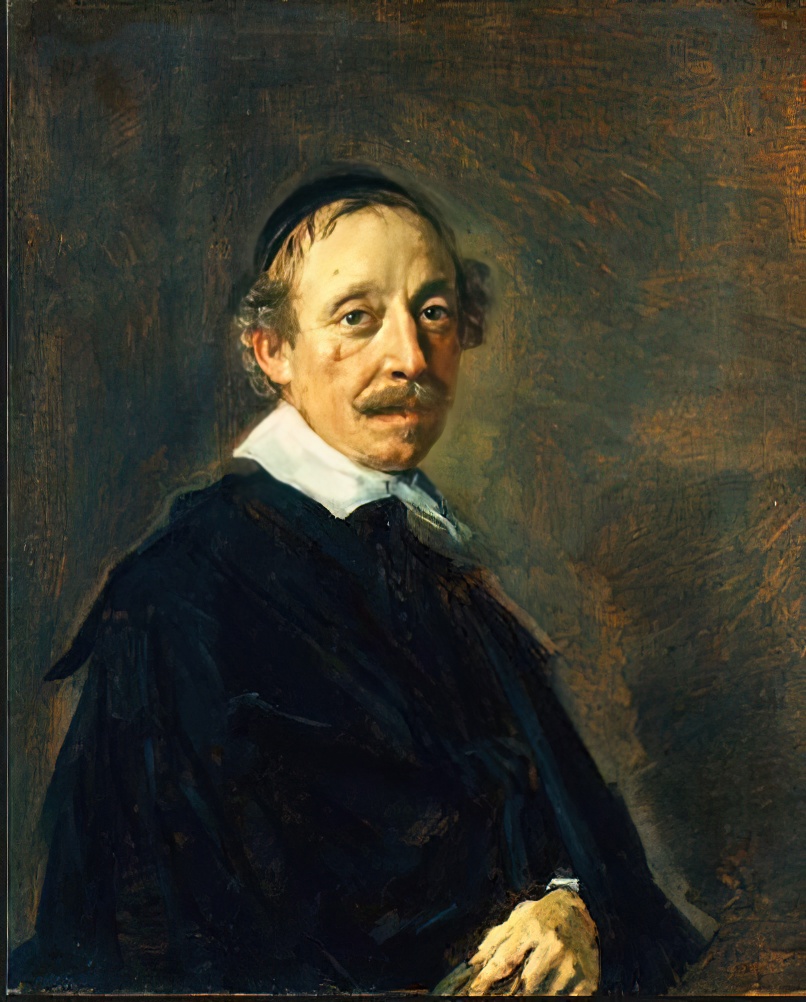
Willem Claeszoon Heda was a Dutch Golden Age artist from the city of Haarlem devoted exclusively to the painting of still life. He is known for his innovation of the late breakfast genre of still life painting.

Matthias Stom, also known by various names including Matteo Stoma, Matthias Stomma, and Matteo Fiammingo, is celebrated for his contributions to the Utrecht Caravaggist movement, though his exact ties to Utrecht itself are debated. Born around 1600, Stom's early life and training remain a matter of conjecture, with some speculation that he may have been trained in Utrecht within the late-Mannerist tradition. However, his work was deeply influenced by Caravaggio and his followers, especially through the dramatic use of chiaroscuro—a technique that plays with sharp contrasts between light and dark to create depth and volume in painting.
Stom spent a significant portion of his career in Italy, where his work resonated with the Caravaggist movement's emphasis on naturalism and tenebrism. The influence of Gerard van Honthorst, known for his candle-lit scenes, is evident in Stom's work, which frequently features similar dramatic lighting effects. His paintings, which number around 200 surviving works, often depict religious themes, showcasing his ability to imbue traditional stories with a profound psychological depth and a distinctive, clay-like treatment of flesh.
Stom's legacy includes a vast array of works that capture the essence of Caravaggist painting while maintaining a unique stylistic signature. His paintings are part of prestigious collections, including those of the Museo del Prado, which highlights his formative influences and the stylistic path he charted throughout his career.
For collectors and experts in art and antiques, Matthias Stom represents a fascinating study in the evolution of Caravaggist painting outside Italy, blending Northern European sensibilities with Italian dramatic intensity. His works offer a window into the baroque era's complex interplay of light, shadow, and human emotion.
To stay updated on new discoveries, sales, and auction events related to Matthias Stom, signing up for updates from art galleries and auction houses specializing in baroque art is advisable. This subscription ensures access to the latest information and opportunities to engage with the works of this distinguished artist within the rich tapestry of Caravaggist painting.

Jan van Kessel the Elder or Jan van Kessel I was a Flemish painter active in Antwerp in the mid 17th century. A versatile artist he practised in many genres including studies of insects, floral still lifes, marines, river landscapes, paradise landscapes, allegorical compositions, scenes with animals and genre scenes. A scion of the Brueghel family many of his subjects took inspiration of the work of his grandfather Jan Brueghel the Elder as well as from the earlier generation of Flemish painters such as Daniel Seghers, Joris Hoefnagel and Frans Snyders. Van Kessel’s works were highly prized by his contemporaries and were collected by skilled artisans, wealthy merchants, nobles and foreign luminaries throughout Europe.






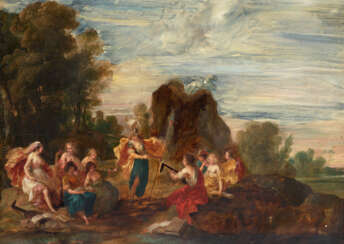

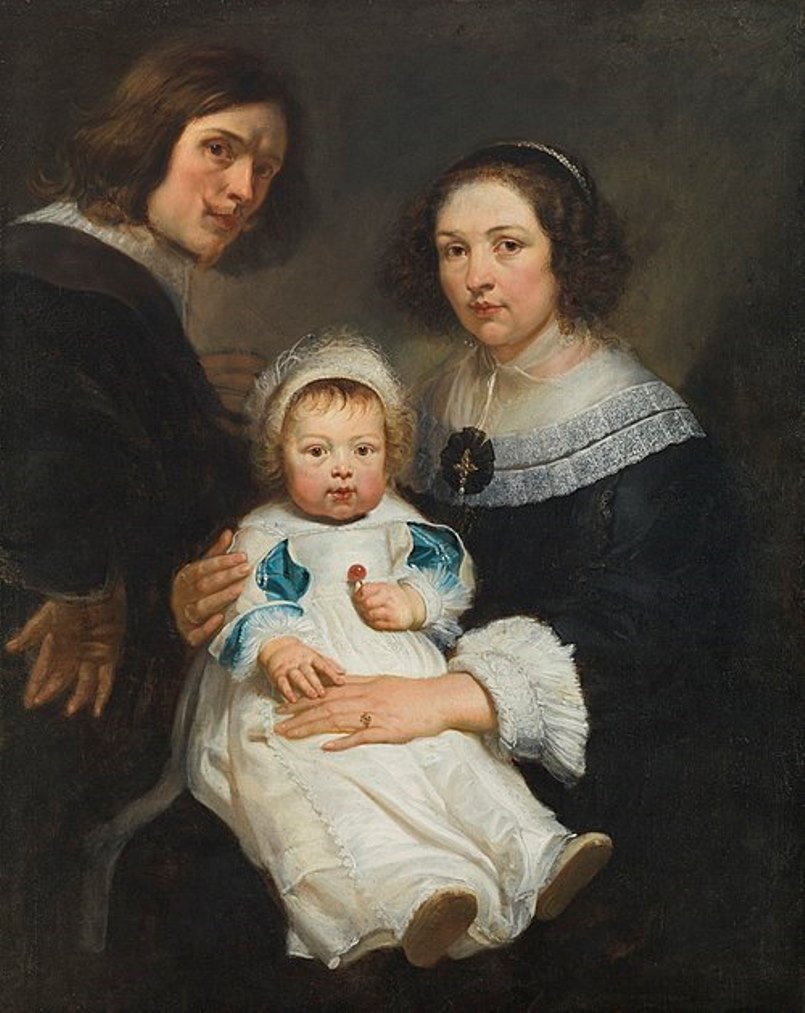






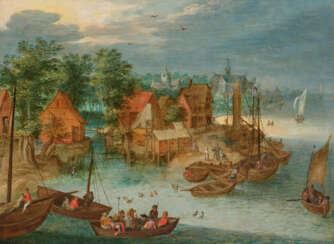








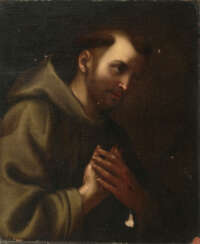



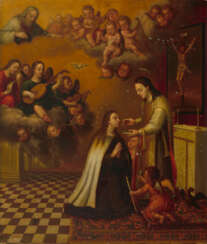






















![MONOGRAMMISTE PW (PIETER WILLEMSZ. [VAN DER STOCK] ?) (ACTIF À AMSTERDAM VERS 1593-APRÈS 1650)](/assets/image/picture_4318334/7d6f8/c098fc09017d9c57a2aa4a612694e53a1730797200jpg__fix_374_244.jpeg)
![MONOGRAMMISTE PW (PIETER WILLEMSZ. [VAN DER STOCK] ?) (ACTIF À AMSTERDAM VERS 1593-APRÈS 1650)](https://veryimportantlot.com/assets/image/picture_4318334/7d6f8/c098fc09017d9c57a2aa4a612694e53a1730797200jpg__fix_374_244.jpeg)









